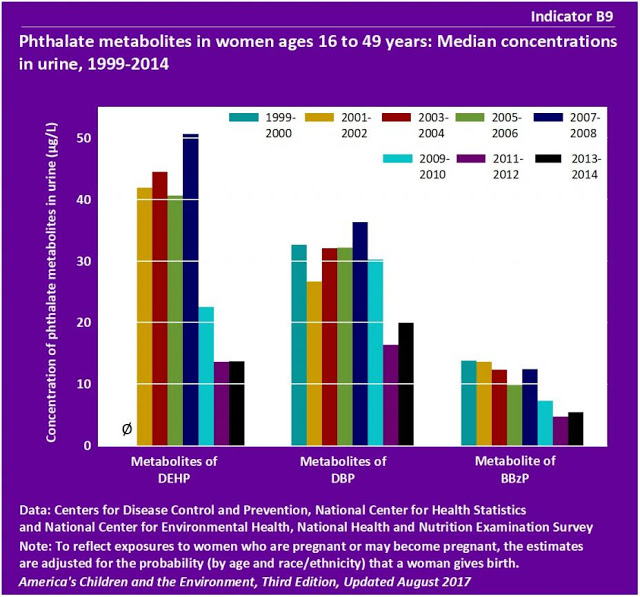Ingredient: Phthalates
We hear the word, but what exactly does it mean? Phthalates are chemicals used to make plastics more flexible and harder to break. Some phthalates are used as solvents (dissolving agents) for other materials. They are used in hundreds of products, such as vinyl flooring, adhesives, detergents, lubricating oils, automotive plastics, plastic clothes (raincoats). They are also used in personal care products such as soaps, shampoos, hair sprays, and nail polishes - which is why we care.

Originally, the primary phthalates used in cosmetic products was dibutylphthalate (DBP). It was used as a plasticizer in nail polishes (to reduce cracking by making them less brittle); dimethylphthalate (DMP) was used in hair sprays (to help avoid stiffness by allowing them to form a flexible film on the hair). Use of these two types of phthalates has been mostly discontinued in cosmetic products. Diethylphthalate (DEP) is used as a solvent and fixative in fragrances. DEP is the only phthalate still commonly used in cosmetics. Since the FDA does NOT require ingredients to be listed for fragrances, if you want to avoid phthalates completely, then you need to avoid products that contain "fragrance" as an ingredient.
Are they safe?
According to the FDA, the Cosmetic Ingredient Review Expert Panel that looked at the maximum amounts of phthalates found in cosmetics, they found that exposures to phthalates from cosmetics were relatively low and were safe. The report was completed in 2005 and use of phthalates in cosmetics has decreased significantly since then.
There is information that suggests some phthalates may cause your endocrine system to be disrupted, leading to reproductive and developmental damage. They have been linked to endometriosis in women, development of tumors, skin irritations, and developmental problems in unborn babies and children. They have also been linked to lower sperm counts in men and altered thyroid function...especially in women.
Not only are phthalates in products, but they are also in the plastic container the product comes in. So, while the ingredient list may not include phthalate, if the jar or bottle is plastic, especially a soft plastic (like a shampoo bottle) you may still have phthalates in your product as they are prone to leaching, especially if the product has a high oil content (like a conditioner). You can minimize this by looking at the plastic recycling code on the bottle. Choose one with codes 1, 2, or 5 and avoid those with a 3 or 7 which have a much higher risk for leaching.

What a recycling label looks like on a bottle. Look for it near the ingredients list.
The biggest problem with determining whether phthalates in your cosmetic products are safe, is that we are exposed to them in many other ways, from medical tubing to building materials and vinyl flooring to detergents. They can also get into your body through dairy and meat from animals that have been exposed, fast food (especially that served in foam packages), even from dust in rooms where the carpet upholstery or wood finishes contain phthalates.
Bottom line: Phthalates are everywhere. While certain phthalates are banned in both the US and Europe, China still uses the worst offender - DEHP.

Every one has some level of phthalates in their body (excreted through your urine). A 2009 report on human exposure to chemicals published by the Centers for Disease Control & Prevention found measurable levels of many phthalate metabolites in the bodies of almost everybody tested. While exposure to this ingredient from your cosmetics may be very low, if you want to minimize the levels, you need to look not only to what you wear, but what you put in your body and how the product is packaged. You can:
